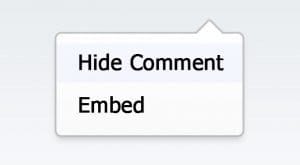 Written by ContentPowered.com
Written by ContentPowered.com
Sometimes, it’s no longer a good idea to keep an active Facebook page. Maybe the owner of the page died, and it needs to be protected against unwanted intrusion. Maybe you’re just sick of having a time sink profile, and you would rather put it on hold. Maybe you’ve decided Facebook’s notorious breaches of privacy are too much to take, and you want to delete every trace of your presence on the site.
For a long time, Facebook was notorious about never deleting an account. You could turn your account off, make it no longer public, but Facebook would retain all of its information in case you ever decided to come back. These days, the site is a little more liberal with removing data, though some is always retained.
There are three ways you can handle an account. You can memorialize it, you can deactivate it or you can delete it. Each has a purpose, and each has limitations.
Deactivate vs. Delete
The easiest way to describe the difference between deactivation and deletion is temporary vs. permanent. If you deactivate your account, you can always change your mind and come back. Activating it again publishes it once more, so you can pick up where you left off. Deleting your account, on the other hand, removes virtually everything about your account permanently. If you wanted to come back, you’d have to register a new account.
- Both deletion and deactivation unpublish your page immediately, making it inaccessible to others, friend or otherwise.
- When an account is deactivated, your profile is removed from the search results and becomes invisible. All of your information – photos, friends, liked pages, etc. – is saved and becomes available if you choose to reactivate your account at a later date.
- When an account is deleted, all personal information is removed from the database. Address, friends, liked pages and virtually everything else is removed.
- Some information is not removed when an account is deleted. This includes photos, notes and sent messages. Removing these from the Facebook databases would be a complex process. Instead, Facebook dissociates them from any personal identifiers and makes them inaccessible to any other Facebook user.
How to Deactivate an Account
The process for deactivating an account is immediate and easy.
- Click the account menu drop down box and click settings.
- In the security section, click to deactivate your account.
- Alternatively, just click this link.
You can reactivate your account quickly and easily; all you need to do is log in. This, of course, means that it’s very easy to come back from a deactivation.
Permanently Delete a Facebook Account
You can permanently delete a Facebook account, but you can’t do it easily or automatically. Facebook tries to put barriers in the way of deleting an account, because if they lose members they lose some of their business leverage.
The first step to deleting your account is to download an archive of your data on the site. In the settings menu, you can click “download a copy of your Facebook data” to gain a copy of that data. What’s included in this archive?
- The information in your About section, including relationships, work experience, education, location and other details.
- A timeline that shows any times your account was deactivated, blocked or deleted.
- Session information including device, IP address and browser information.
- Ad click information for recent history.
- Any alternate names or nicknames you’ve used over the years.
- A list of the apps you’ve added to your account.
- Your message history and Facebook chat logs.
- Any friends you have deleted in the past.
- The data Facebook uses for facial recognition to try to automatically identify and tag you in photos.
- The groups you’re a member of on the platform.
- The friends, pages and apps you’ve hidden from your feed.
- A lot more.
As you can see, Facebook stores a lot of information about you for a long time. You don’t need to delete or deactivate your account to download this archive; you can do it at any time with no consequence. It may be interesting to see what Facebook knows about you.
The second step is to visit this page and submit a deletion request. You can’t deactivate your account first, because doing so logs you out and logging back in reactivates your account.
Facebook delays the total deletion of your account for several days. During that time, you can log back in and change your mind, cancelling the deletion request. You will lose nothing and there are no penalties for doing so.
Deleting Other Accounts
There are three circumstances where you may be able to initiate the deletion of an account that isn’t yours.
- The account owner is under the age of 13.
- The account owner, over the age of 13, is incapacitated and cannot perform the action themselves.
- The account owner is in prison and their account needs to be handled.
The first is an automatic deletion. Facebook’s terms of service – and much of the terms of the Internet in general – requires that users be at least 13 years of age to use the platform. Any user under 13 is subject to immediate deletion upon discovery.
The second varies depending on circumstance. You can visit the Facebook removal request form and fill out the name and URL of the incapacitated user. You will also need to list your relationship to them and your own name, and you will need to submit supporting documentation. Facebook will review your request and determine whether they can delete, deactivate, disable or otherwise protect the user’s account or remove it.
Memorializing an Account
When a user dies, their family can request that the account be memorialized. This is a permanent action. What does memorialization do?
- Locks the account. No one can log in to potentially use or vandalize the account.
- Removes the memorialized account from appearing in certain suggestions, such as birthday reminders and friend suggestions.
- If the privacy settings are open enough, the memorialized account is opened to a memory share feature.
To request that a page be memorialized, you can visit this form and input the account name, email address, your relationship, the year of death and a valid obituary as proof.




